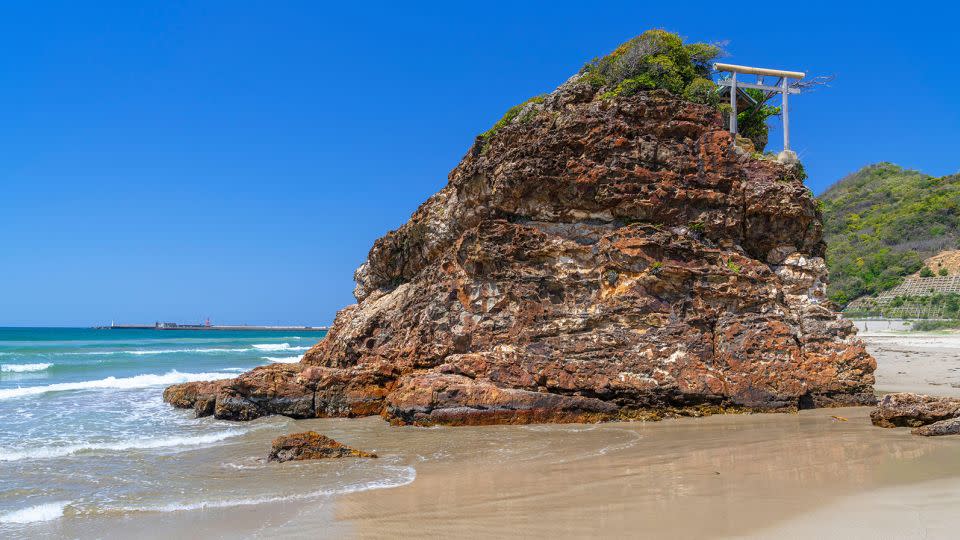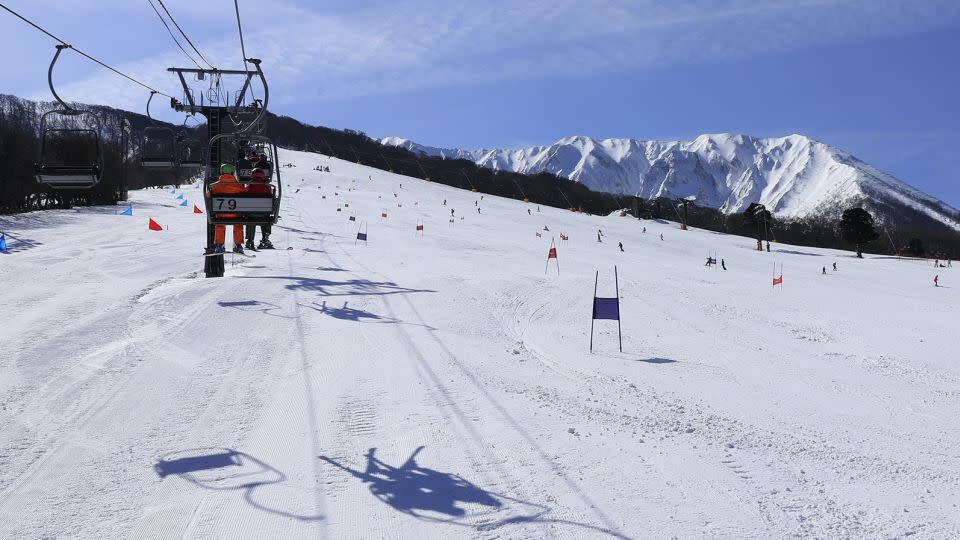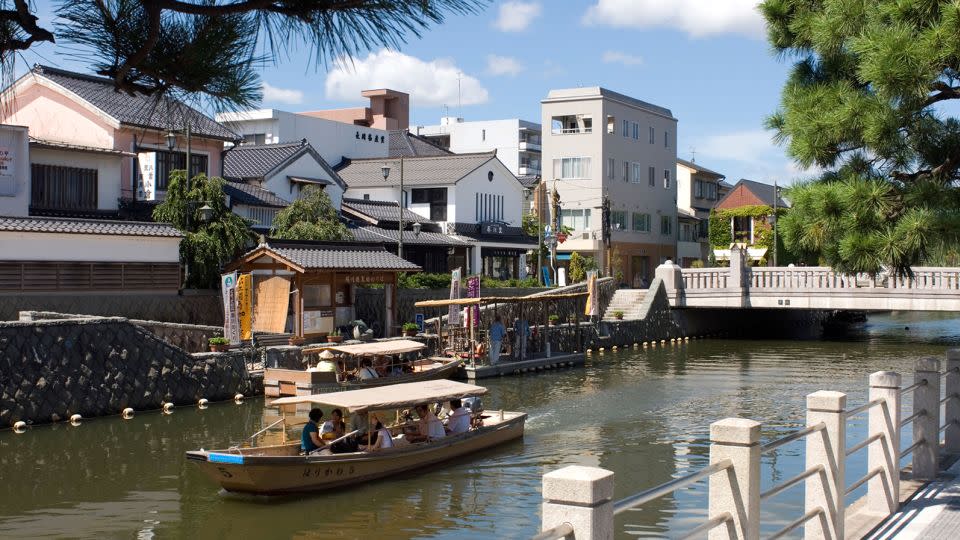San’in: Japan’s least-populated region is home to some of its finest treasures
San’in isn’t the Japan most travelers picture on their first visit to the country. There are no neon billboards, skyscrapers, or crowded intersections. Instead, thIs area in the southwest of Honshu, Japan’s main island, offers its own unique array of views that travelers won’t find anywhere else.
Spread over 5,500 square miles, it features organic farms, centuries-old artistic practices, historic islands with one-of-a-kind ecology, and, according to legend, the gods’ favorite meeting place in the world.
Most foreign visitors never see it. Japan’s famous high-speed rail system does not pass through San’in, which leaves it off many travelers’ radars altogether.
But it’s well worth a trip.
The San’in region consists of Japan’s two least populous prefectures, Shimane and Tottori, which sit between the Sea of Japan and the northern side of the country’s Chukogu mountains.
Only about one million of Japan’s 125 million residents live there. “The Kojiki,” an important eighth-century Shinto text, depicts the San’in region as an annual gathering place for the gods.
One-third of the text’s stories take place in the region, with Shimane even being depicted as the birthplace of sake. (Though Nara and Hyogo might like to have a word – all three regions have important stories to share about their role in the beverage’s history.)
The land of the gods
Tales of Japanese mythology are woven into the San’in region’s most popular destinations. The most famous among them is the Izumo Taisha Grand Shrine, which dates back to the 700s. The Shinto shrine is one of the oldest in Japan, and as the Kojiki goes, it is believed to be an early stop on the gods’ annual meeting.
The shrine is associated with positive relationships and attracts many visitors praying for love or marriage. Its most famous feature is its 44-foot, 4.5-ton shimenawa, or twisted straw rope. The rope is the largest in Japan and every few years, local volunteers reweave it by hand.

Another destination believed to be frequented by the gods is nearby Inasa Beach, a UNESCO World Heritage Site on the Sea of Japan, known for its soft sandy shore. The larger-than-life rock where they are believed to gather, known as Benten-Jima, frames a picture-perfect view of the beach’s radiant sunsets.
Natural beauty without the crowds
For outdoorsy types, the San’in covers just about every base, from mountains to deserts, waterfalls to coastlines.
For starters, the region is home to the Uradome Coast, a 9-mile (14.5-kilometer) expanse of national park shoreline. Formed by eroded rocks, the park includes natural cliffs, caves, sea walls, and arches. It’s a prime space for kayaking, snorkeling, paddleboarding and waterfront hiking.
The region is also the backdrop to Japan’s only desert, a 10-mile cluster of rolling sand beside the Sea of Japan known as the Tottori Dunes. Visitors can sandboard here, but those who prefer skiing through fresh powder can find it just 60 miles west on Mount Daisen, the highest mountain in the Chikogu range.

In the warmer months, visitors explore its 5,673 feet by hiking and climbing, or they gaze out on its peak from the soothing waters of Kaike Onsen, the largest hot spring resort in the region.
For a more manicured approach to the outdoors, one of San’in’s most treasured gems is the internationally lauded Adachi Museum of Art, known for its 1.7 million square feet of garden space. Designed to be “a living painting,” it has been named Japan’s best traditional garden for 20 years straight by The Journal of Japanese Gardening, besting even the most frequented gardens in Tokyo and Kyoto.
For the boldest adventurers, San’in holds the distinction of having perhaps the most dangerous of the nation’s registered Important Treasures of Japan. This designation goes to Nageiredo Temple, a serene wooden Buddhist temple with a difficult location: the face of Mount Mitoku, a mountain with steep hundred-foot cliffs.
Hikers and religious pilgrims alike have been visiting for 1,300 years, but it’s not for the faint of heart. Climbers are forbidden from going it alone and must have their footwear assessed for safety before getting the okay to ascend.
Finding your way
Millions of Japanese travelers visit San’in each year, but only a few hundred thousand international travelers make their way there. Many foreign travelers come and go from Japan without knowing the San’in even exists.
“It’s not an easy place to just go visit,” says Baye Cooper, who traveled to San’in in late 2020 while he was living and working in nearby Yamaguchi prefecture.
One of the biggest hurdles to visiting? The San’in is not on a Shinkansen line. Japan’s famous “bullet train” high-speed rail system connects Japan’s most popular travel destinations, including major cities like Kyoto, Tokyo, and Osaka.

If a traveler wants to access the San’in via train from Tokyo, they’ll need to take the Shinkansen halfway there, to the city of Okayama, and connect to the San’in’s local line. With just one transfer needed, it’s a simple ride but a long one, clocking in at around six hours.
Many travelers interested in visiting the San’in region start their journeys in Osaka or Hiroshima, which can trim the journey down to around three to four hours, depending on which city they’re traveling to.
There are faster ways to get there. Visitors can take a domestic flight from Tokyo to one of the San’in region’s regional airports, in the cities of Izumo and Yonago, and be there in 1.5 hours or less.
The only direct international routes that currently service San’in are from Hong Kong (via Hong Kong Airlines) and Seoul (via Air Seoul), but the San’in Tourism Organization has hopes of expanding to more international flight routes. Some cities offer bus service to the region, and of course, car rentals are a great option for accessing San’in’s more rural destinations.
San’in’s relative seclusion may make it hard to access, but it’s also exactly what makes it worthy of getting to know – and, if the stars align, making lifelong memories there. “[Travelers] should make the commute,” Cooper says. “It’s worth the experience.”
For more CNN news and newsletters create an account at CNN.com

